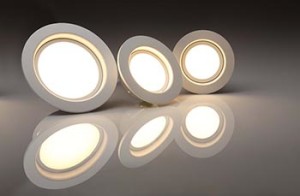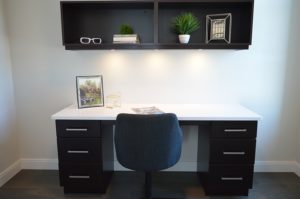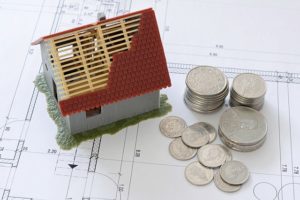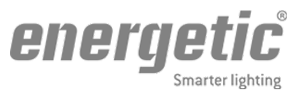 It is not exactly a war but let’s face it: there IS considerable debate regarding energy efficiency as it relates to lightbulbs in Scottsdale. There are several lighting options available to both homes and businesses – incandescents, which have been around since the 1800s, fluorescents and CFLs (compact fluorescent lamps), and now LED bulbs. For decades, incandescent bulbs have been the most commonly used lighting fixtures. The caveat is that they consume a lot of energy.
It is not exactly a war but let’s face it: there IS considerable debate regarding energy efficiency as it relates to lightbulbs in Scottsdale. There are several lighting options available to both homes and businesses – incandescents, which have been around since the 1800s, fluorescents and CFLs (compact fluorescent lamps), and now LED bulbs. For decades, incandescent bulbs have been the most commonly used lighting fixtures. The caveat is that they consume a lot of energy.
So, in an age when energy costs are skyrocketing, what’s the best lighting option? Read on to find out…
Fluorescents/CFLs
Fluorescent bulbs are more energy efficient than incandecent bulbs and have provided brighter lighting since they became available in the waning years of the 19th century. From the bi-pin fluorescent tubes, technology moved on to create the CFLs, which are cheaper than traditional fluorescent tubes that need ballasts to regulate the current.
CFLs are curly bulbs and also use less electricity than incandescents. While costing more than the regular incandescent bulbs, they are likely to pay for themselves within nine months, thus giving users a cost savings in the long run. This stems from the fact that CFL bulbs only use around 25 percent energy and can last for more than 10 times their incandescent counterparts. Like fluorescent tubes, however, CFLs do contain a bit of mercury, which is hazardous to your health and dangerous for the environment.
LED lamps, the new star in energy efficiency and lighting technology
If you are searching for the best lighting option for homes and businesses in Scottsdale, take a look at LED lights. These are the same light-emitting diodes that you see in traffic lights, advertising signs and possibly your alarm clock, which have been given extended functionality and design that make them highly cost – and energy – efficient lighting fixtures.
As the square footage of new homes has increased over the years, more lighting fixtures are needed. LEDs are able to distribute light across wider areas, which means you will only need fewer lighting fixtures with LED light bulbs in comparison to fluorescent lighting.
LEDs are weather-tolerant too, therefore they can be very useful in areas such as Scottsdale during times when the temperatures skyrocket or plummet. They are so functional, in fact, that they are even used today in refrigerators and freezer storage areas.
What’s more, LED lights provide their full brightness as soon as you turn them on, even in sub-zero temperatures, which makes them perfect for lighting dark areas, pathways and hallways. They can also be fitted with sensors so that they automatically turn off when an occupant is no longer in the room or area. Fluorescent bulbs on the other hand will need several minutes to warm up before their full brightness is achieved.
Despite the higher cost compared to other lighting fixtures, the amount of savings you will realize through the years of use is very telling. Here are some positive energy efficiency points:
- LED light fixtures use only 20 percent to 25 percent energy and last 25x longer than incandescents and over 10 times more than CFLs. Power consumption is between 2 to 17 watts only. For example, a 60w incandescent bulb costs $1, with an average lifespan of 1,200 hours, while a $2-14w CFL bulb will have an average of 8,000 hours. Compare that to an LED light bulb that might cost $8 but only uses 8w and yet has a life span of 25,000 hours. When you do the math, you will realize how much you will save in the long run.
- They are solid-state lighting figures and do not have filaments that could be easily damaged, making them very durable, particularly during transport.
- LED lights remain cool all throughout the time they remain turned on. Compare this to incandescents and fluorescents that contribute to the heat in a room or office, which effectively reduces your air conditioning costs.
- LEDs are mercury-free, so they are also healthy lighting alternatives and disposal is not a problem.
In an average household, lighting uses up somewhere around 8 percent to 15 percent of the budget for electricity. Using smarter choices for lighting can effectively reduce energy consumption by more than 50 percent. Isn’t this a good incentive to switch to LED lighting immediately?


 Apartment Lighting
Apartment Lighting Area Lighting
Area Lighting Automotive Lighting
Automotive Lighting Building Wall Pack Lighting
Building Wall Pack Lighting Canopy Lighting
Canopy Lighting High & Low Bay Lighting
High & Low Bay Lighting Industrial Lighting
Industrial Lighting Parking Lots & Garages
Parking Lots & Garages Pathway Lighting
Pathway Lighting Retail Lighting
Retail Lighting Stairwell Lighting
Stairwell Lighting























